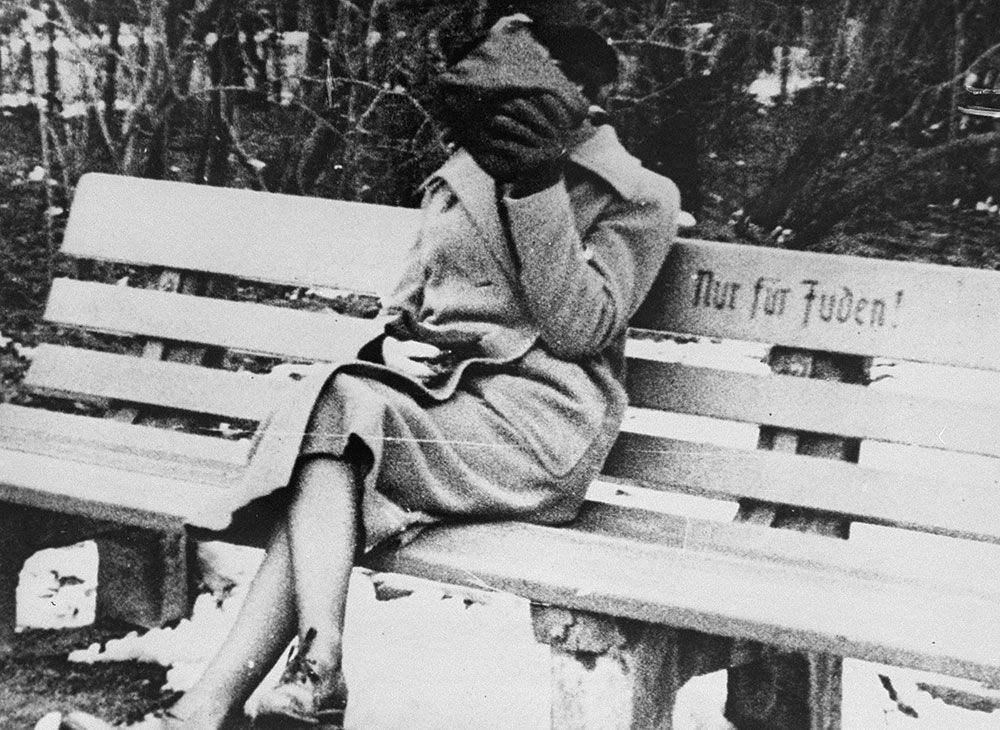The purpose of this activity is to help students think more deeply about the relationship between religion and identity. In order to do so, students will divide into groups and research one interviewee from the Museum’s Voices on Antisemitism series in-depth and present their research to the class using one of the options listed below.
Imam Mohamed Magid

Imam Mohamed Magid takes a strong stand against antisemitism and Holocaust denial and believes it's important for other Muslim leaders to do so as well. Learn more
Eboo Patel

Eboo Patel insists that it is not enough for young people to unlearn the hatreds of previous generations. In bringing them together to serve their communities, Patel hopes that they will become the architects of greater religious understanding. Learn more
Father John Pawlikowski

For more than forty years, Father John Pawlikowski has urged Catholics and others to confront the long history of Christian antisemitism. Learn more
Rabbi Gila Ruskin
 At the age of 50, Rabbi Gila Ruskin left her pulpit position to teach Jewish studies at an urban-Baltimore Catholic school with a historically African American student body. The experience led Ruskin to appreciate the many ways that Jews and African Americans can come together through a shared history of oppression and, she says, a commitment to prophetic ideals. Learn more
At the age of 50, Rabbi Gila Ruskin left her pulpit position to teach Jewish studies at an urban-Baltimore Catholic school with a historically African American student body. The experience led Ruskin to appreciate the many ways that Jews and African Americans can come together through a shared history of oppression and, she says, a commitment to prophetic ideals. Learn more
Col. Edward B. Westermann
 Colonel Edward Westermann believes it's important to prepare his cadets to confront morally complicated situations. In a seminar he taught on the Holocaust, Westermann called upon his students to consider carefully the responsibilities of their post. Learn more
Colonel Edward Westermann believes it's important to prepare his cadets to confront morally complicated situations. In a seminar he taught on the Holocaust, Westermann called upon his students to consider carefully the responsibilities of their post. Learn more
Methodology
- Divide students into groups.
- Assign a podcast episode to each group.
- Each group will research the person assigned to them, paying close attention to how he or she identifies with religion and promotes interfaith understanding.
- Students should consider who the individual is, where he or she lives, what his or her motivation is in researching or speaking about religious beliefs and practices and what methods this person uses to carry out his or her work.
- Once the groups have gathered the necessary information, they should present what they have learned about the individual assigned to them using any of the methods below:
- Design a poster on the person including information on who he or she is and how this person identifies with religion.
- Write a newspaper article “reporting” on who their individual is and what he or she is doing to improve interfaith relations.
- Create a profile on a website instructing others on how to strengthen interfaith relations using the methods the individual they were assigned to does.
Recommended Research Resources
Museum Resources
- Committee on Ethics, Religion, and the Holocaust (This Museum committee serves as a resource for individuals and groups grappling with the ethical and philosophical issues raised by the Holocaust and contemporary manifestations of antisemitism.)
- Jews and Christians: The Unfolding Interfaith Relationship (Explores the history of the Jewish-Christian relationship and how it was altered by the events of the Holocaust.)
Holocaust Encyclopedia articles:
- Antisemitism
- Antisemitism in History: From the Early Church to 1400
- Antisemitism in History: The Early Modern Era, 1300–1800
- Antisemitism in History: The Era of Nationalism, 1800–1918
- German Churches and the Nazi State
Additional Online Resources Related to Religion and Identity
- Anti-Defamation League (Fights antisemitism and all forms of bigotry in the US)
- Institute for Christian & Jewish Studies (Works to disarm religious hatred and establish models of interfaith understanding.)

